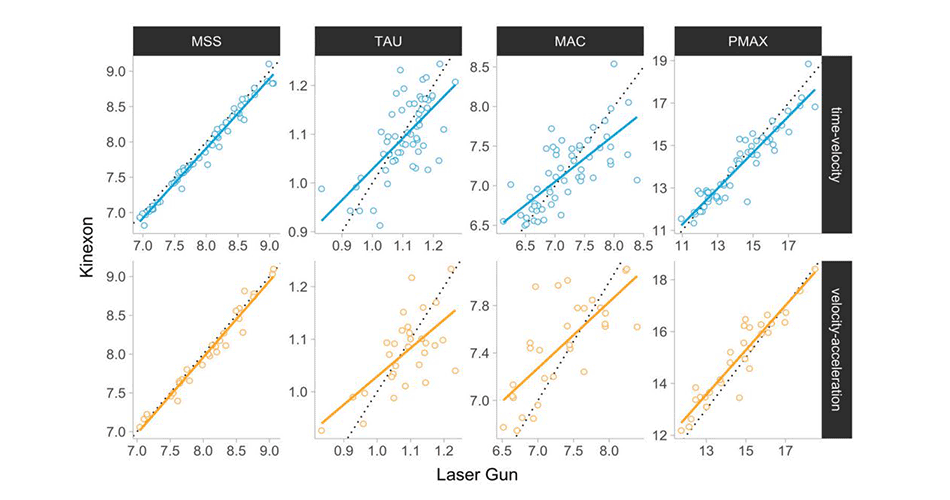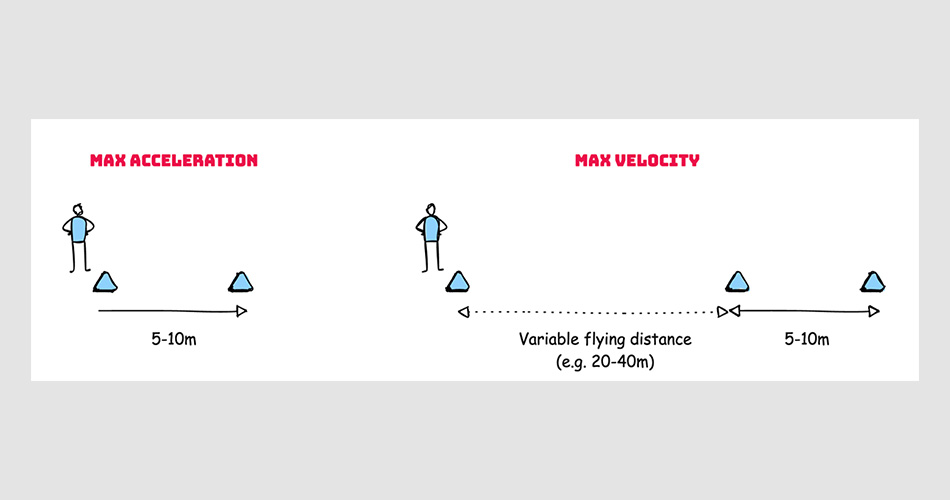Introducing SprintPRO: The Ultimate Sprint Profiling App
In the world of athletic performance, data-driven insights are the key to unlocking an athlete’s full potential. Whether you’re a coach, an athlete, or a sports scientist, understanding the nuances of an athlete’s sprint performance can make all the difference. That’s where sprintPRO comes in—a revolutionary web app designed to transform raw sprint data into meaningful acceleration-velocity and force-velocity profiles.
Why Choose SprintPRO?
Simplicity at Its Core
SprintPRO is built with simplicity in mind. We understand that not everyone has the time or expertise to navigate complex software such as the {shorts} R package. Our user-friendly interface ensures that you can quickly upload split times from timing gates and get detailed sprint profiles without any hassle. No steep learning curves, no convoluted processes—just straightforward, effective analysis.
Visual Approach
A picture is worth a thousand words, and SprintPRO leverages this by providing a highly visual approach to sprint profiling. Using the power of the Plotly library, SprintPRO transforms your data into interactive and visually stunning plots. These plots are not just static images; they allow you to explore the data dynamically, zooming in on specific segments, and uncovering insights at a glance.
Powerful Exploration with Plotly
Plotly is renowned for its powerful data visualization capabilities, and SprintPRO harnesses this power to bring you interactive and informative plots. This means you can delve deep into your sprint data, examining acceleration, velocity, and force with precision. The interactivity of Plotly ensures that every data point is accessible and explorable, giving you a comprehensive understanding of an athlete’s performance.
Seven Advanced Sprint Profiling Models
One of SprintPRO’s standout features is its utilization of seven different sprint profiling models. Each model offers unique insights and perspectives, allowing for a holistic view of sprint performance. Whether you’re looking to analyze peak acceleration, monitor velocity changes, or understand force application, SprintPRO has you covered. These models provide a robust framework for assessing and improving athletic performance.
Analysis of the Resisted Sprints
One of the key features of the SprintPRO app is the ability to estimate force-velocity profiles from resisted sprints. Resistance can be defined as inertia (e.g., weigh vest), horizontal force resistance (e.g., DynaSpeed or 1080 systems), or combination (e.g., sled). This is truly novel feature.
Key Features of SprintPRO
- User-Friendly Interface: Easy to navigate, ensuring quick and efficient data input and analysis.
- Interactive Plots: Leveraging Plotly for dynamic and detailed data visualization.
- Comprehensive Models: Access to seven different sprint profiling models for in-depth analysis.
- Instant Insights: Transform raw split times into meaningful profiles within seconds.
- Versatile Application: Ideal for coaches, athletes, and sports scientists looking to gain a competitive edge.
How SprintPRO Works
- Data Upload: Simply upload your split times from timing gates.
- Profile Generation: SprintPRO automatically generates acceleration-velocity and force-velocity profiles.
- Explore and Analyze: Use the interactive Plotly plots to explore the data, zoom in on specifics, and derive actionable insights.
- Optimize Performance: Leverage the detailed profiles to make informed decisions on training and performance optimization.
Conclusion
SprintPRO is more than just a web app; it’s a game-changer in the world of sprint performance analysis. By combining simplicity, visual appeal, and the power of Plotly, SprintPRO makes sprint profiling accessible and effective for everyone. Whether you’re aiming to shave seconds off a sprint time or seeking to understand the biomechanics of running, SprintPRO provides the tools you need to succeed.
Unlock the full potential of your sprint data with SprintPRO—where data meets performance.
Check out the demo and in-depth videos to see how the SprintPRO app can help you elevate your athletes to the next level!
Demo video
In-depth instrutional video
Ready to elevate your sprint profiling? Try SprintPRO today and experience the future of athletic performance analysis.
References
Blog posts
- Sprint Profiling – Common Problems and Solutions
- Optimal Force-Velocity Profile for Sprinting: Is It All Bollocks?
- Force-Velocity Profiling in Resisted Sprinting
- Effects of the Flying Start on Estimated Short Sprint Profiles Using Timing Gates
Published matherial
- Jovanović, M., & Vescovi, J. (2022). {shorts}: An R Package for Modeling Short Sprints. International Journal of Strength and Conditioning, 2(1). https://doi.org/10.47206/ijsc.v2i1.74
- Jovanović, M. (2023). Bias in estimated short sprint profiles using timing gates due to the flying start: Simulation study and proposed solutions. Computer Methods in Biomechanics and Biomedical Engineering, 1–11. https://doi.org/10.1080/10255842.2023.2170713
- Jovanović, M. (2024). {shorts}: Short Sprints. R Package, Version 3.1.0. Available online: https://CRAN.R-project.org/package=shorts
- Jovanović M, et. al. (2024). Effects of the Flying Start on Estimated Short Sprint Profiles Using Timing Gates. Sensors, 24(9):2894. https://doi.org/10.3390/s24092894
- Vescovi, J. D., & Jovanović, M. (2021). Sprint Mechanical Characteristics of Female Soccer Players: A Retrospective Pilot Study to Examine a Novel Approach for Correction of Timing Gate Starts. Frontiers in Sports and Active Living, 3, 629694. https://doi.org/10.3389/fspor.2021.629694











Responses